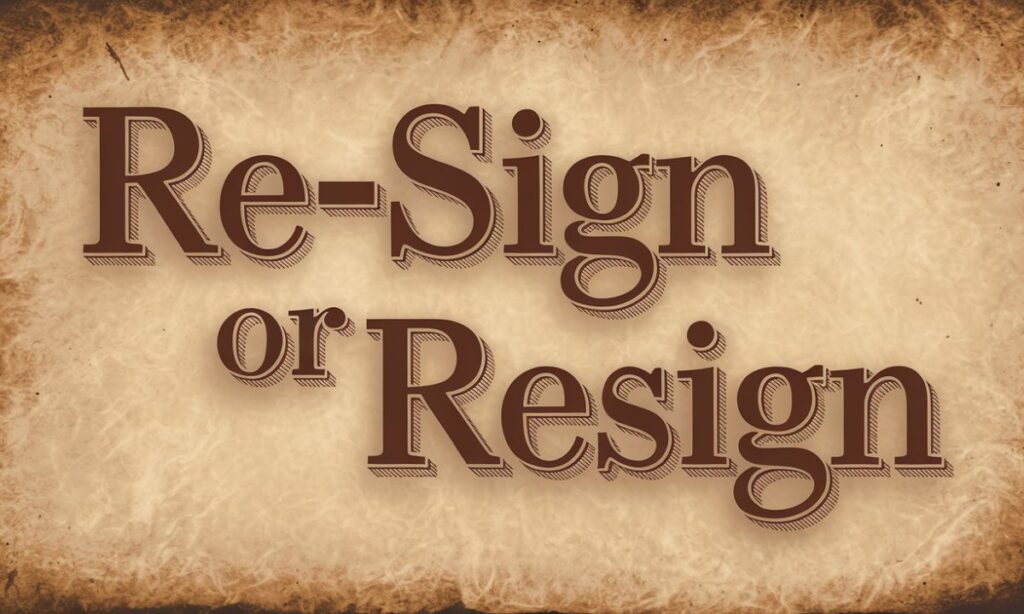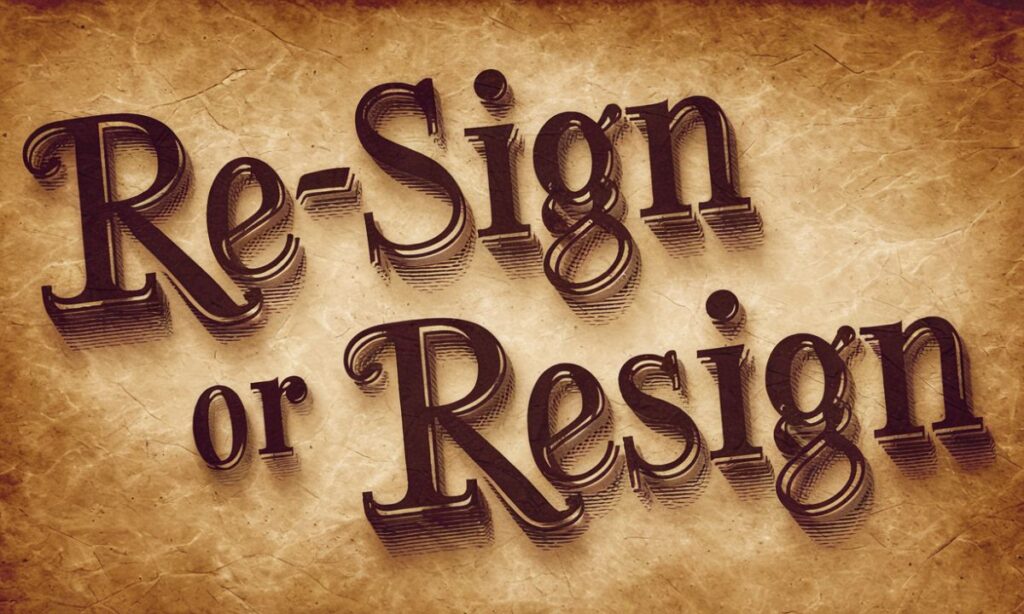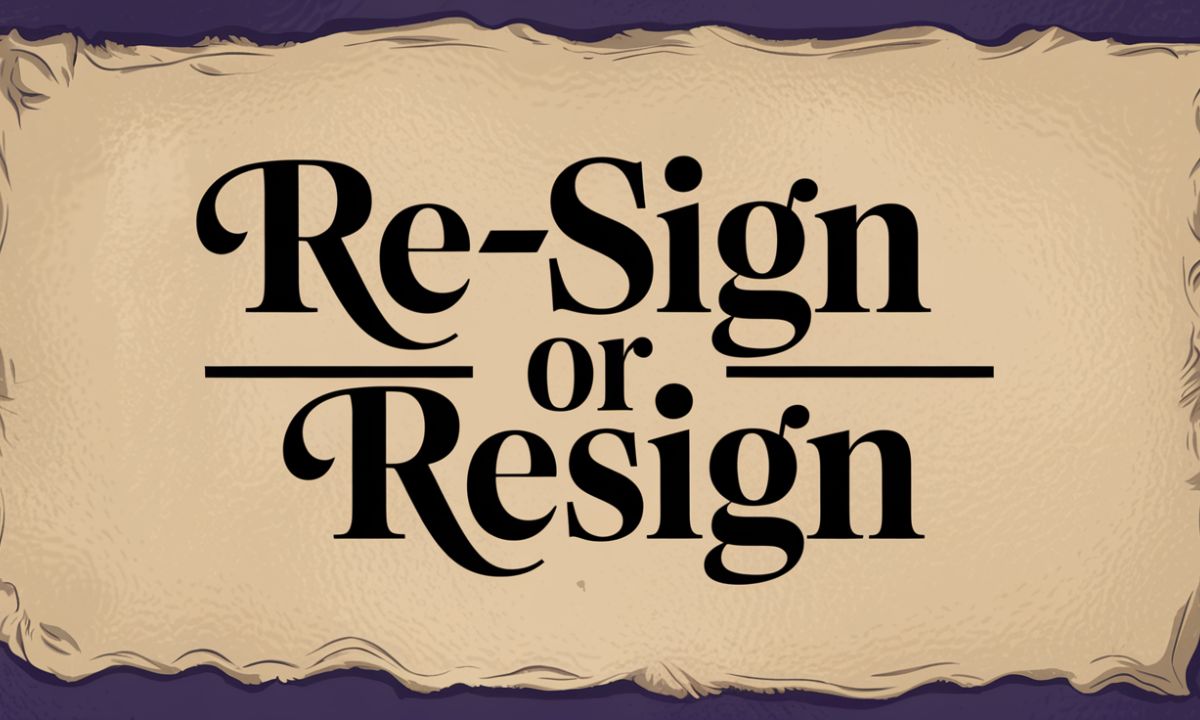Have you ever been moments away from sending an email that could potentially derail your entire professional career? The tiny difference between “re-sign” and “resign” might seem insignificant, but it could mean the difference between extending a contract and unexpectedly quitting your job.
Language is a powerful tool, and precision matters. These two words – so similar yet so different – have tripped up even the most seasoned professionals. Whether you’re an athlete negotiating a contract, a business professional drafting communications, or simply someone who wants to communicate clearly, understanding the nuanced difference between “re-sign” and “resign” is crucial.
What is the Difference Between Re-sign and Resign?
“Re-sign” and “resign” might look similar, but they have dramatically different meanings. The hyphen in “re-sign” completely changes the word’s interpretation.
While “resign” means to quit a job or position, “re-sign” means to sign again or extend a contract. This subtle difference can lead to significant misunderstandings in professional and personal communication.
Re-sign vs Resign: A Quick Overview
At first glance, these words look almost identical. However, their meanings couldn’t be more different:
- Re-sign: To sign a document or contract again
- Resign: To voluntarily leave a job or position
| Term | Meaning | Usage Context |
| Re-sign | Sign again | Contracts, agreements, appointments |
| Resign | Quit a position | Employment, political office, professional roles |
When to Use “Re-sign”

Use “re-sign” when you’re talking about signing a document or contract again. For example, athletes might re-sign with a sports team for another season, or a tenant might re-sign a lease agreement.
The hyphen is important here, as it clearly indicates the action of signing something once more. In most cases, “re-sign” implies a deliberate and positive continuation of an existing arrangement.
Example 1: Re-signing a Contract
Imagine you’re a professional athlete or a corporate executive. Your current contract is expiring, but you want to continue your relationship with the organization. In this scenario, you would re-sign the contract – literally signing it again to extend the agreement.
Key Scenarios for Re-signing:
- Sports team contract renewals
- Employment contract extensions
- Service agreement continuations
- Academic appointment renewals
Example 2: Re-signing for a New Appointment
Sometimes, re-signing involves formally accepting a new or continued role. This might include:
- Academic researchers renewing grant agreements
- Consultants extending project contracts
- Board members recommitting to their positions
When to Use “Resign”

“Resign” is used when someone is leaving a job, position, or formal role voluntarily. It typically connotes ending one’s current professional engagement.
For instance, “She decided to resign from her position as marketing director” means she is quitting her job. The word carries a sense of departure and typically involves submitting a formal notice of one’s intention to leave.
Example 1: Resigning from a Job
Resign means to voluntarily terminate your current employment. When you decide to leave a position, you submit a resignation letter informing your employer of your intention to quit.
Typical Resignation Scenarios:
- Finding a new job opportunity
- Career transition
- Personal reasons
- Workplace conflicts
- Retirement
Example 2: Politician Resigning from Office
Public figures often resign from their positions due to various reasons:
- Scandal or controversy
- Personal health issues
- Political disagreements
- Career advancement
- Ethical considerations
Common Mistakes to Avoid

The most common mistake is confusing these two terms due to their similar spelling. Without careful attention, “re-sign” and “resign” can be easily mixed up, leading to potentially embarrassing or problematic miscommunications.
Always double-check the context and ensure you’re using the correct term. In formal writing, be especially careful to use the hyphen when you mean to sign again.
Professionals often make embarrassing errors by confusing these terms:
- Forgetting the hyphen in “re-sign”
- Using “resign” when meaning to extend a contract
- Misunderstanding context
- Improper written communication
Re-sign or Resign: A Simple Trick to Remember
Here’s a simple memory trick: think of the hyphen in “re-sign” as a bridge connecting two signings. If you’re talking about signing something again, use the hyphen.
If you’re talking about leaving a job, drop the hyphen and use “resign”. Visualizing the hyphen as a connector can help you remember the distinction between these easily confused words.
Pro Tip: Use this mental checklist:
- Does the context involve signing something again? → Re-sign
- Are you leaving a position? → Resign
Final Thoughts: Precision in Communication
Words are more than just letters strung together. They carry weight, meaning, and potential consequences. By understanding the subtle difference between “re-sign” and “resign”, you protect yourself from potential misunderstandings and communicate with clarity and confidence.
Remember: A single hyphen and a slight change in spelling can dramatically alter your message’s meaning. Always double-check, proofread, and when in doubt, read your sentence aloud.
Expert Quote
“In the world of professional communication, precision is not just about being correct – it’s about being understood.” – Communication Expert
Practical Takeaway
Next time you’re drafting an important document or email, pause and ask yourself:
- Am I signing again or leaving a position?
- Have I used the correct term?
- Does my sentence make logical sense?
By mastering these nuanced terms, you’ll communicate more effectively and professionally.

